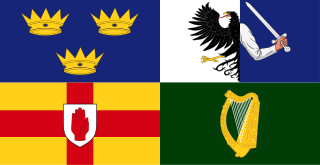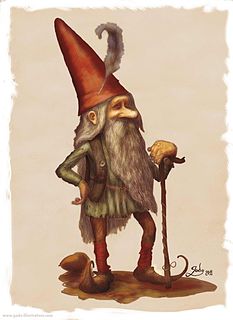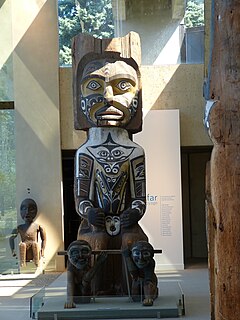Related Research Articles
Magical thinking, or superstitious thinking, is the belief that unrelated events are causally connected despite the absence of any plausible causal link between them, particularly as a result of supernatural effects. Examples include the idea that personal thoughts can influence the external world without acting on them, or that objects must be causally connected if they resemble each other or have come into contact with each other in the past. Magical thinking is a type of fallacious thinking and is a common source of invalid causal inferences. Unlike the confusion of correlation with causation, magical thinking does not require the events to be correlated.

The Azande are an Ubangian ethnic group in Central Africa. They live primarily in the northeastern part of the Democratic Republic of the Congo, in south-central and southwestern part of South Sudan, and in southeastern Central African Republic. The Congolese Azande live in Orientale Province, specifically along the Uele River; Isiro, Dungu, Kisangani and Duruma. The Central African Azande live in the districts of Rafaï, Bangasu and Obo. The Azande of South Sudan live in Central, Western Equatoria and Western Bahr al-Ghazal States, Yei, Maridi, Yambio, Tombura, Deim Zubeir, Wau Town and Momoi.

Sir Edward Evan Evans-Pritchard, Kt FBA FRAI was an English anthropologist who was instrumental in the development of social anthropology. He was Professor of Social Anthropology at the University of Oxford from 1946 to 1970.

Equatoria is a region of southern South Sudan, along the upper reaches of the White Nile. Originally a province of Anglo-Egyptian Sudan, it also contained most of northern parts of present-day Uganda, including Lake Albert and West Nile. It was an idealistic effort to create a model state in the interior of Africa that never consisted of more than a handful of adventurers and soldiers in isolated outposts.

The Nuer people are a Nilotic ethnic group concentrated in the Greater Upper Nile region of South Sudan. They also live in the Ethiopian region of Gambella. The Nuer speak the Nuer language, which belongs to the Nilotic language family. They are the second largest ethnic group in South Sudan. The Nuer people are pastoralists who herd cattle for a living. Their cattle serve as companions and define their lifestyle. The Nuer call themselves "Naath".

Irish folklore refers to the folktales, balladry, music, dance, and so forth, ultimately, all of folk culture.

The wolf, goat and cabbage problem is a river crossing puzzle. It dates back to at least the 9th century, and has entered the folklore of several cultures.

A lutin is a type of hobgoblin in French folklore and fairy tales. Female lutins are called lutines.

In the cultures of the Horn of Africa and adjacent regions of the Middle East, Zār is the term for a demon or spirit assumed to possess individuals, mostly women, and to cause discomfort or illness. The so-called zār ritual or zār cult is the practice of exorcising such spirits from the possessed individual.
Procession of the dead is a motif present in the folkloric traditions around the world. It mostly refers to a march of ghosts, phantoms or souls, sometimes commanded by a creature related to the Otherworld, the Underworld or the Afterlife. The concept is taken to be of considerable antiquity, and is classified in Stith Thompson's Motif-Index of Folk-Literature as Motif E491, "Procession of the dead".
Ancient Near Eastern Texts Relating to the Old Testament edited by James B. Pritchard is an anthology of important historical, legal, mythological, liturgical, and secular texts from the ancient Near East. In spite of the name, the included texts have broad coverage and do not necessarily relate to the Old Testament. William W. Hallo, writing in the Journal of the American Oriental Society in 1970, described it as "a modern classic ever since its first appearance in 1950", because "for the first time it assembled some of the most significant Ancient Near Eastern texts in authoritative, generously annotated English translations based on the accumulated insight of several generations of scholarship scattered". It is conventional to cite the work as ANET. ANEP refers to a companion volume Ancient Near Eastern Pictures Relating to the Old Testament, featuring 882 black and white designs and photos. An additional volume of supplementary texts and pictures was published in 1969 as "The Ancient Near East: Supplementary Texts and Pictures Relating to the Old Testament". An abridgement of ANET and ANEP was published in a single volume in 1958 as "The Ancient Near East, Volume I: An Anthology of Texts and Pictures" with a 2nd edition published in 1965. A second anthology of supplementary material was published in 1975 as "Ancient Near East, Volume 2: A New Anthology of Texts and Pictures".
Grateful dead is both a motif and a group of related folktales present in many cultures throughout the world.

Sociological and anthropological theories about religion generally attempt to explain the origin and function of religion. These theories define what they present as universal characteristics of religious belief and practice.
In social sciences, a cross-cutting cleavage exists when groups on one cleavage overlap among groups on another cleavage. "Cleavages" may include racial, political, religious divisions in society. Formally, members of a group j on a given cleavage x belong to groups on a second cleavage y with members of other groups k, l, m, etc. from the first cleavage x. For example, if a society contained two ethnic groups that had equal proportions of rich and poor it would be cross-cutting. While the concept may have been around since antiquity the formalizing of it originated with James Madison in The Federalist, Number 10. Robert A. Dahl built a theory of Pluralist democracy which is a direct descendant of Madison's cross-cutting cleavages. The term's antonym is reinforcing cleavages", which would be the case of one of the ethnic groups being all rich and the other all poor. The term originates from Simmel (1908) in his work Soziologie.

The culture of South Sudan encompasses the religions, languages, ethnic groups, foods, and other traditions of peoples of the modern state of South Sudan, as well as of the inhabitants of the historical regions of southern Sudan.

South Sudan is home to around 60 indigenous ethnic groups and 80 linguistic partitions among a 2021 population of around 11 million. Historically, most ethnic groups were lacking in formal Western political institutions, with land held by the community and elders acting as problem solvers and adjudicators. Today, most ethnic groups still embrace a cattle culture in which livestock is the main measure of wealth and used for bride wealth.
Audrey Joan Butt Colson, is a social anthropologist with a particular interest in the Amerindian peoples of Guyana, Brazil and Venezuela. She was, together with Peter Rivière, one of the pioneers of Amazonian anthropology at the University of Oxford.

Witchcraft among the Zande people of North Central Africa is magic used to inflict harm on an individual that is native to the Azande tribal peoples. The belief in witchcraft is present in every aspect of Zande society. They believe it is a power that can only be passed on from a parent to their child. To the Azande, a witch uses witchcraft when he has hatred towards another person. Witchcraft can also manipulate nature to bring harm upon the victim of the witch. Oracles and witch doctors determine whether someone is guilty of using witchcraft on another villager. More magic is then created to avenge the victim and punish the one who committed the transgression.

Ioan Myrddin Lewis FBA, popularly known as I. M. Lewis, was a professor emeritus of anthropology at the London School of Economics.
Ture is a character in the folklore of the Zande people of North Central Africa. A trickster figure, he is "the chief character in Zande folktales", in which he employs what among the Azande is called sanza, or speech with a double meaning. According to E. E. Evans-Pritchard, who collected and published a number of Zande stories, most of them involve Ture.
References
- 1 2 Evans-Pritchard, E. E. (1965). "Some Zande Animal Tales from the Gore Collection". Man . 65: 70–77. doi:10.2307/2797214. JSTOR 2797214.
- ↑ Vossen, Rainer; Dimmendaal, Gerrit J., eds. (2020). The Oxford Handbook of African Languages. Oxford UP. pp. 231, 521, 529. ISBN 978-0-19-100737-8.
- ↑ Evans-Pritchard, E. E. (1963). "Meaning in Zande Proverbs". Man . 63: 4–7. doi:10.2307/2797604. JSTOR 2797604.
- 1 2 Evans-Pritchard, E. E. (1956). ""Sanza", a Characteristic Feature of Zande Language and Thought". Bulletin of the School of Oriental and African Studies . 18 (1): 161–80. doi:10.1017/S0041977X00122268. JSTOR 610134. S2CID 145430010.
- 1 2 Evans-Pritchard, E. E. (1964). "Zande Proverbs: Final Selection and Comments". Man . 64: 1–5. doi:10.2307/2797553. JSTOR 2797553.
- ↑ Evans-Pritchard, E. E. (1963). "Sixty-One Zande Proverbs". Man . 63: 109–12. doi:10.2307/2796900. JSTOR 2796900.
- ↑ Evans-Pritchard, E. E. (1963). "Notes on Some Animals in Zandeland". Man . 63: 139–42. doi:10.2307/2795833. JSTOR 2795833.
- ↑ Evans-Pritchard, E. E. (1964). "Two Zande Tales". Man . 64: 105–109. doi:10.2307/2797361. JSTOR 2797361.